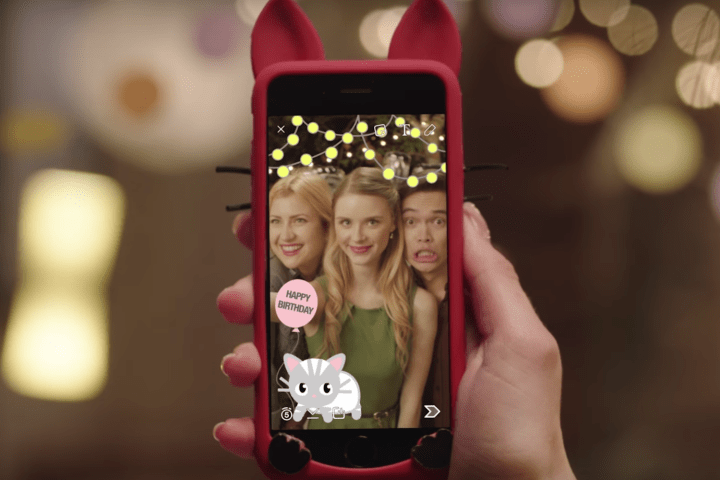
A new report by eMarketer predicts that Snapchat will continue to see double-digit growth this year, and the next, totaling a 27.2 percent increase in 2016 followed by 13.6 percent in 2017. That will boost the app’s 150 million user base to 217 million by the end of 2017.
Millennials (those currently aged 16-35) will continue to make up the largest share of Snapchat’s user base, but that particular demographic will shrink to 56 percent of the app’s audience from its current status of 70 percent. This statistic falls in line with the recent analysis that more older users are flocking to the app. In July, ratings company ComScore claimed that over-35-year-olds were adopting Snapchat — this segment currently makes up 14 percent of the app’s audience in the United States.
Staying with the U.S., eMarketer adds that the app will reach 58.6 million monthly active users in the United States in 2016 (that’s over a third of its global user base).
However, the growth rate will start to decrease after this period. “In 2018 and beyond, when the Snapchat audience is expected to be substantially larger than it is today, year-over-year increases will be in the single-digit range,” states eMarketer.
It all amounts to great news for Snapchat, which must’ve been slightly worried when its larger rivals (here’s looking at you, Facebook and Instagram) began muscling into its territory by plagiarizing its features.
In order to continue to monetize, Snapchat still needs to work on its image among older users, who view it as a “difficult” app. Its biggest obstacle to long-term growth will be opening up its app to make it easier for users to learn its camera functions, and follow others. This could be the key to unlocking growth — and more advertising dollars — for the foreseeable future.


